#FeministArt
Explore tagged Tumblr posts
Text

#nixelpixel#никсельпиксель#никаво��вуд#nikavodvud#feminism#feministart#феминизм#феминистка#легенда#ностальгия#nostalgia#nostalgic#graphic art#artist#artwork#art#draw#drawing#paint#portrait#рисование#рисовать#рисования#рисунок карандашом#рисунок#портрет#цветныекарандаши#color pencil
9 notes
·
View notes
Text


Bird Transformation (1972) Ana Mendieta
4 notes
·
View notes
Text
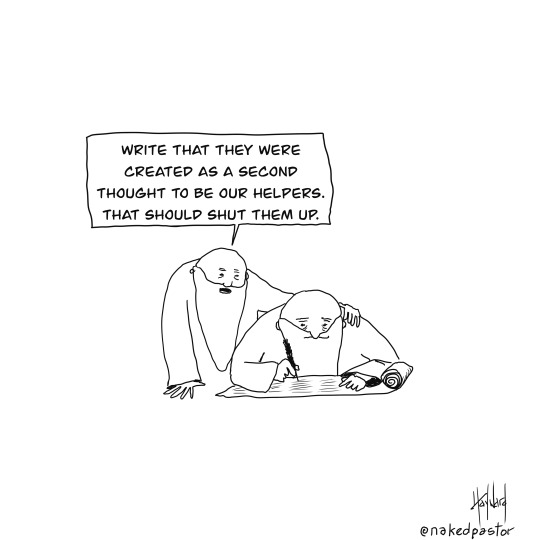
Might have worked for a while.
Not anymore.
8 notes
·
View notes
Text
Plan

Jenny Saville, Plan (1993). Oil on canvas, 274 x 213cm.
Jenny Saville's Plan, created in 1993, is a striking embodiment of her approach to redefining the portrayal of the female form in contemporary art. This analysis aims to delve into the various elements that make Plan a significant work in the realm of modern art and feminist discourse.
The Visual Narrative:
Plan presents a large-scale depiction of a female nude, a subject traditionally associated with beauty and idealization. However, Saville subverts these conventions by presenting a figure that is unapologetically raw and real. The body is marked with lines and contours, reminiscent of surgical markings, which demarcate areas of the flesh. These lines speak to the societal pressures on women to conform to certain physical standards, echoing the invasive nature of cosmetic surgery.
Technique and Style:
Saville's use of oil on canvas is notable for its thick, tactile application, giving the painting a visceral quality that emphasizes the physicality of the body. The exaggerated scale of the work, measuring 274 x 213 cm, confronts the viewer with its imposing presence, making it impossible to ignore or diminish the subject's physicality.
Influences and Inspirations:
Saville's work is heavily influenced by a range of artists, from the voluptuous figures of Peter Paul Rubens to the raw, emotional intensity of Lucian Freud. Yet, she transcends these influences by challenging the traditional male gaze in art, offering a perspective that is deeply rooted in the realities of the female experience.
Feminist Undertones:
Plan resonates with feminist ideas, particularly those related to body politics and the societal scrutiny of female bodies. Saville's work is informed by feminist theories and writers, exploring themes of identity, autonomy, and the complexity of the female experience. The painting becomes a powerful statement against the idealized, often unrealistic standards imposed on women's bodies.
A Canvas for Thought:
How does Jenny Saville's Plan challenge your perceptions of beauty and the representation of the female form in art? What does this painting evoke in you regarding the societal expectations placed on women's bodies?
#JennySaville#ContemporaryArt#FeministArt#BodyPositivity#ArtHistory#ModernArt#FemaleForm#ArtAnalysis#BritishArt#Expressionism#OilPainting#ArtBlogger#SavilleArt#ArtAndFeminism#ArtCritique
6 notes
·
View notes
Text

🌿Me gusta que las brujas andemos juntas
🔥Me gusta que nos juntemos alrededor del fuego o bajo la luna 🌙

Me gusta que nos mezclemos, elijamos y abracemos. Porque ahí donde nos encontramos, generaciones, trayectorias, historias, deseos y dolores, ahí justo somos más fuertes.
"No estamos solas" es el presente y es lo que el futuro necesita. No estamos solas, no estamos derrotadas, ni rendidas, ni dormidas. Estamos en primera línea.
IG: @re_bicha
#ilustraciondigital#feminismos#feminismo#feministart#feminist#witchyart#witch#intersectional feminism
3 notes
·
View notes
Text

International Women's Day
#8m#8marzo#8demarzo#8march#feminism#feminismo#feminista#feministart#lgbtq#lgbtq🏳️🌈#mujeres#womans#díainternacionaldelamujer#mujereslibres#diadelamujer#kawaiichibi#kawaiiart#kawaiiartist#cuteart#illustratorsoninstagram#cuteartstyle#ilustracion#kawaiiilustration#drawing#artist#femart#fightlikeagirl#art#digital art#illustration
5 notes
·
View notes
Text



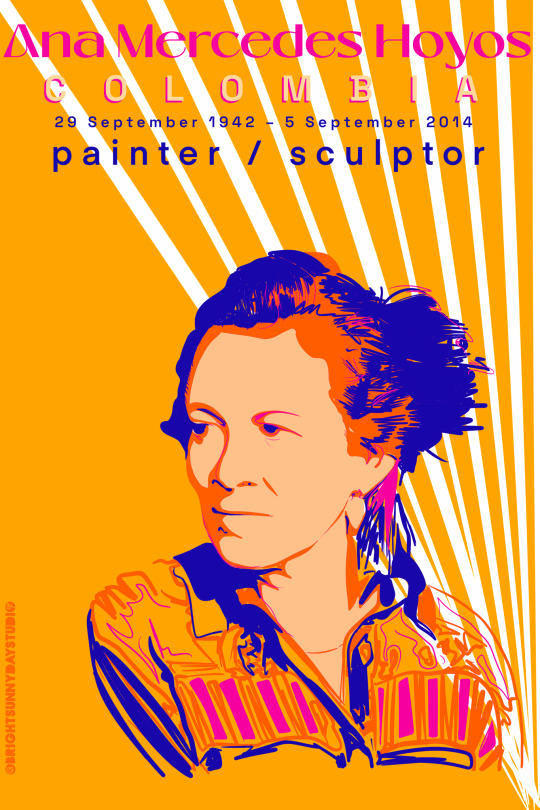
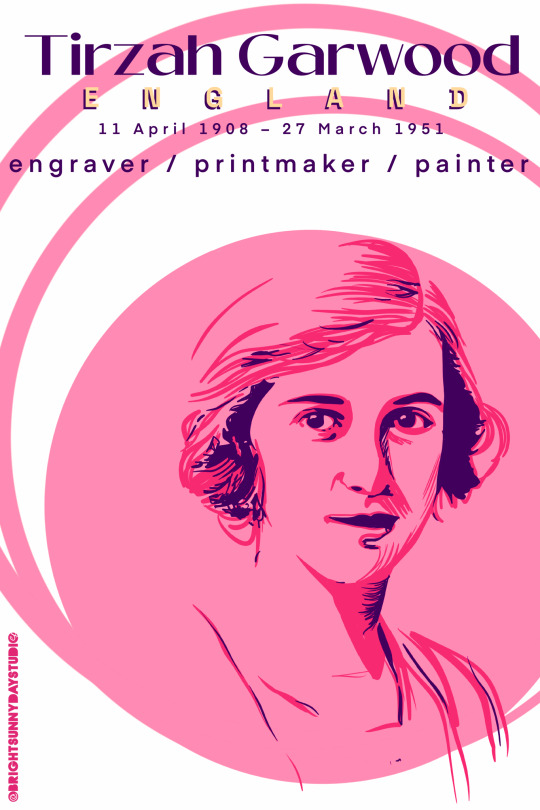

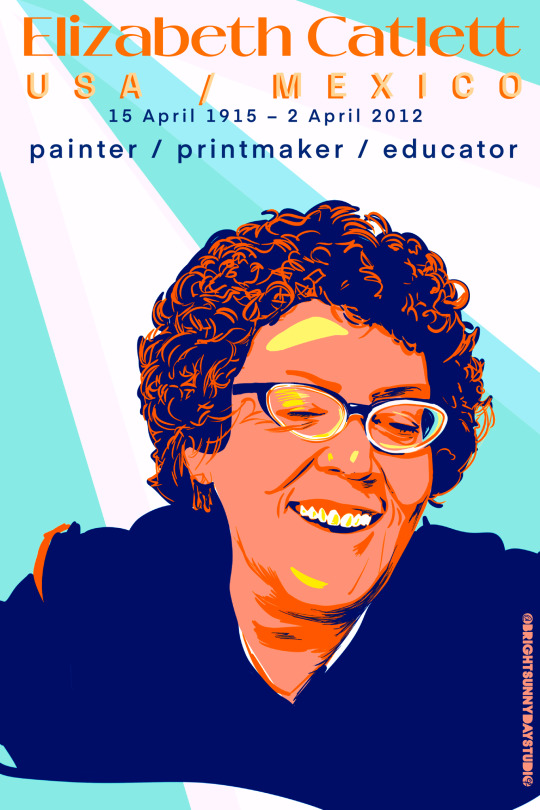
#womenempowerment#women artists#women art revolution#international women's day#international women's month#diadelamujer#supportwomenartists#feministart#feminist artists#mini poster#poster design#digital art#artists on tumblr#brightsunnydaystudio#feminist
11 notes
·
View notes
Text
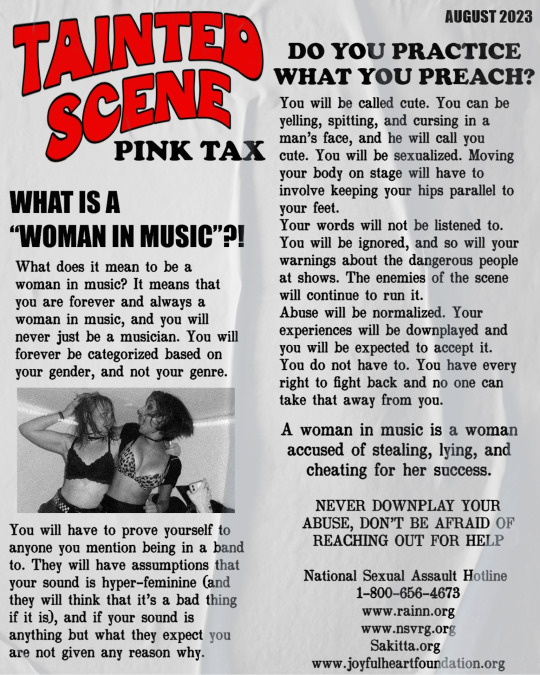
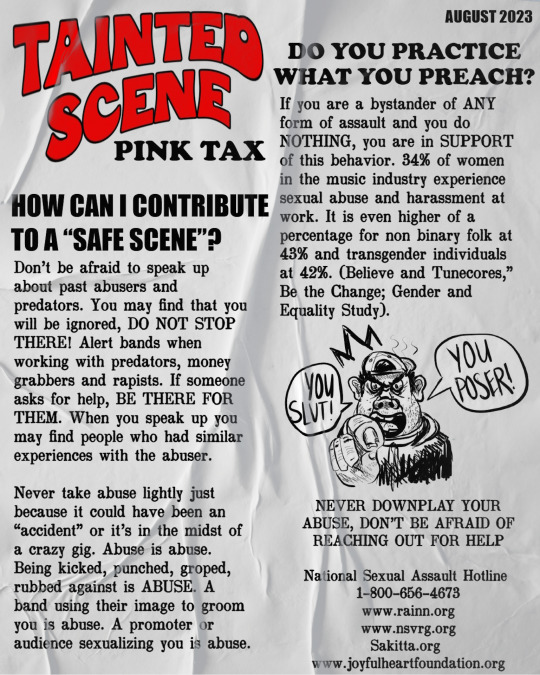
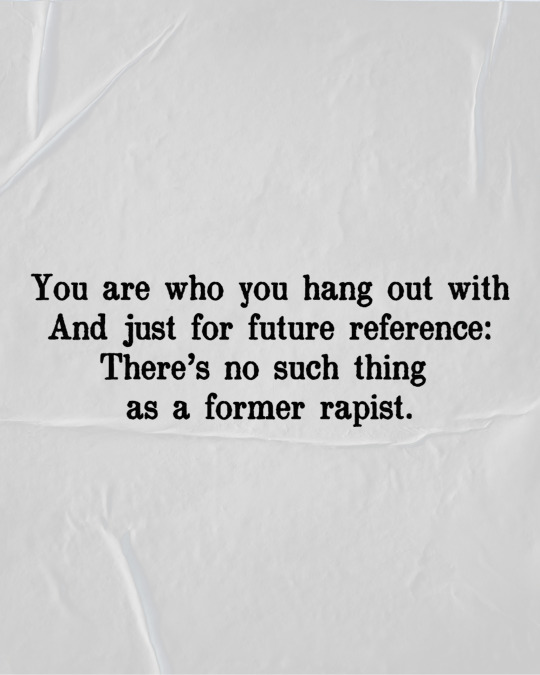
Don’t claim you won’t tolerate abuse then support an abuser, yeah we are talking about you.
#RiotGrrrlRevolution#ZineCulture#PunkFeminism#UndergroundMusicScene#FeministPunk#DIYZine#PunkRockRebellion#EmpowermentThroughPunk#ZineArtists#WomenInPunk#RiotGrrrlPower#FeministArt#DIYMusicScene#AlternativeFeminism#PunkArtistry#ZineCommunity#GenderEquality#SubversiveSounds#DIYRevolution#PunkFeministMovement#IndieZines#RiotGrrrlAnthem#FeministRock#IndiePunkScene#ZineCreators#FierceFeminism#PunkUnderground#ZineInspiration#FeministVoices#IndieMusicRevolution
6 notes
·
View notes
Photo
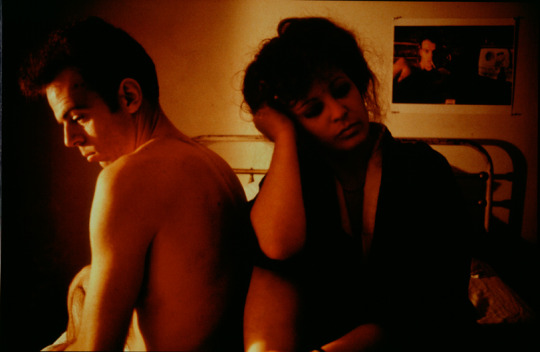
Eyes on/Terrain of the Body Review for Wonderland Magazine by me https://www.wonderlandmagazine.com/2017/02/07/eyes-terrains-body/#3
7 notes
·
View notes
Photo
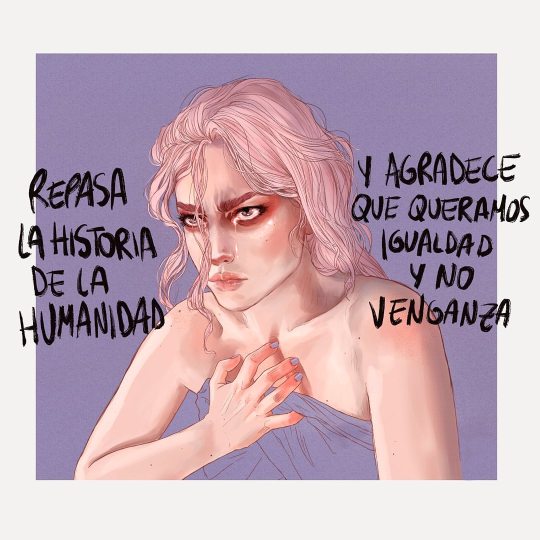
Bueno, a mi no me miréis mucho que yo a veces sí querría una poquititita, una miajina de vengancita. En casos personales, en casos en los que habría deseado físicamente estar mazada para haber soltado una buena hostia sin temer por mi vida luego. En fin, que este año no os suelto más tocho, ya me he quedado bastante a gusto con esta ilustración. Feliz día a todas!! . . . #8m #8marzo #hastalosovariosdetantoscojones #feminismoilustrado #diadelamujer #ilustracionfeminista #feministart #igualdaddegénero #womansday #digitalart (en Brooklyn, New York) https://www.instagram.com/p/CphdBXeOdhy/?igshid=NGJjMDIxMWI=
#8m#8marzo#hastalosovariosdetantoscojones#feminismoilustrado#diadelamujer#ilustracionfeminista#feministart#igualdaddegénero#womansday#digitalart
6 notes
·
View notes
Photo
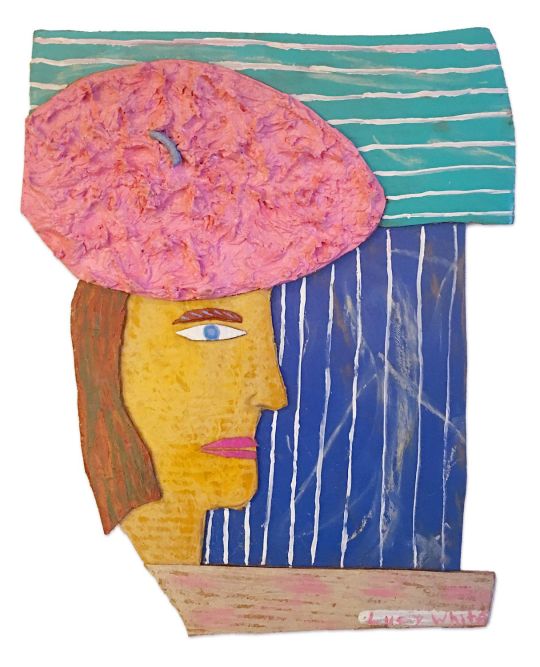
Pink Beret Acrylic, pastel and paper mache on cardboard (1982)
#art#paintings#drawings#mixed media#collage#collageart#80s art#portraits#art about women#beret#pinkberet#women artists#feministart#mixedmediaart#artgallery#artoftheday#portraitsofwomen#profile#womenandhats#hats#outsiderart#womenartists#artwork#instaart#popart#instaarthub#art on tumblr#artoninstagram#lucywhiteartist
2 notes
·
View notes
Text
Judith Slaying Holofernes

Artemisia Gentileschi, Judith Beheading Holofernes (1620). Oil on canvas, 146.5 x 108 cm. Museo Capodimonte, Naples.
Artemisia Gentileschi's Judith Slaying Holofernes stands as one of the most vivid and dramatic works in the realm of Baroque painting, encapsulating themes of courage, justice, and female empowerment. This post delves into the artistic and symbolic nuances of Gentileschi’s iconic painting, offering a deep dive into its historical context, visual analysis, and enduring impact.
The Power and Fury: A Closer Look at Gentileschi's Masterpiece
Artemisia Gentileschi, born in 1593 in Rome, was one of the first women to achieve recognition in the male-dominated world of post-Renaissance art. Judith Slaying Holofernes is often viewed through the lens of Gentileschi's personal history, particularly her experience with sexual assault and the subsequent highly publicized trial. The painting, created in the early 1620s, is interpreted by many as a form of cathartic expression, showcasing her mastery over her traumas and her assailants.
The Art of Contrast: Tenebrism in Judith Slaying Holofernes
The painting depicts the biblical story of Judith, a widow who saves her village from the Assyrian general Holofernes by seducing and then beheading him. Gentileschi’s rendition is remarkable for its intense realism and emotional power. Unlike other contemporary versions of the subject, Gentileschi’s Judith appears strong and resolute in her task, capturing a moment of intense physical and psychological action.
Defiance in the Details: Symbolism in Gentileschi's Narrative
In Judith Slaying Holofernes, Gentileschi aligns herself with Judith, symbolically enacting a narrative of female agency and vengeance. This work is often read as a proto-feminist statement, with Judith’s act representing a broader defiance against patriarchal oppression. The painting challenges traditional gender roles and reflects Gentileschi's own struggles against the societal limitations imposed on women of her time.
Artemisia Gentileschi's Legacy: Reclaiming Space and Narrative
Artemisia Gentileschi's work has experienced a resurgence of interest in recent years, celebrated for its bold thematic content and its reflection of the artist's personal narrative of overcoming adversity. Judith Slaying Holofernes not only contributes to the historical narrative of art but continues to inspire discussions on gender, power, and resilience.
A Canvas of Courage: The Timeless Message of Judith Slaying Holofernes
Judith Slaying Holofernes by Artemisia Gentileschi is not just a depiction of a biblical heroine, but a profound commentary on justice, courage, and the capabilities of women both in art and in life. It remains a powerful image of defiance and autonomy, resonating with audiences centuries after it was painted.
Reflect and Engage
How do you think Judith Slaying Holofernes challenges or reinforces the perceptions of women both in the era it was painted and today? Does the painting's violent imagery detract from or enhance its message of female empowerment?
#ArtemisiaGentileschi#JudithSlayingHolofernes#BaroqueArt#FeministArt#ArtHistory#WomenInArt#PowerfulPaintings#ArtisticExpression#HistoricalArt#ArtAndResistance#artblogger
3 notes
·
View notes
Text
A woman's realization is only possible when she exercises her feminine essence when she connects with what she was created to BE.
Just look at your characteristics and observe that you are cyclical, your body has a different form and function than a man's, and when your hormones - a woman's - are at adequate levels, then you feel happier.
And all of this is directly influenced by how you treat your emotions, how you act with your body, and how you deal with your choices and decisions.
You only experience full satisfaction in your life by exercising the purpose for which you were created - and your body is a living reminder of what you have to look for in your every action in the world.
When you understand the greatness of your purpose as a woman and settle into your feminine essence, being beautiful, vulnerable, loving and receptive... it becomes possible to achieve true happiness.
#oldfashioned#traditional femininity#tradwife#homemaker#embrace tradition#reject modernity embrace tradition#traditionalfemininity#feminine not feminist#revoltagainstthemodernworld#traditionalgenderroles#gun control#feminism#feminist#patriarchy#womenempowerment#womensrights#strongwomen#feministart
9 notes
·
View notes
Text

Hi there! Today in Argentina and many other places of the world there will be demonstrations against patriarchal violences. The movement #niunamenos (the original chant) erupted in our country in 2015 and from there it spread throughout Latin America and the entire world. Nine years later, we cannot deny that violence continues to reproduce in a context of economic, social, and environmental crisis, with the guarantee of the State and governments. But it hasn't been all in vain: we have a wealth of feminist advocacy and activism that sustains us in everyday life, which cannot be erased in one fell swoop by any right-wing government.
The history of our feminist struggle in Argentina did not begin on that June 3rd, but draws on diverse trajectories and histories of denunciation and resistance. In Argentina, an icon condensed what it meant to be the mother of a disappeared child: the diapers that became the white scarves/handkerchiefs of the Mothers of Plaza de Mayo, whose organized anger and pain were a beacon for subsequent generations.
Today, they are reinvented and re-signified in the scarves that accompany us: 💜 Purple against all forms of patriarchal violence. 💚 Green for legal abortion. ❤️ Red against SA of children. 🧡 Orange for the separation of Church and State.
They are our memory and our experience intertwined, linked like our hands, chants, and shouts that remember our dead and disappeared, so close to the heart and so present in our struggle.
On this day, we reafirm the desire for a world without patriarchal oppression, we embrace families and friends in their constant search for justice for their loved ones who were abducted or k*lled. We demand justice for the recent lesbicide of Pamela, Andrea, Sofia and Roxana in Buenos Aires.
🔥 Nine years, one voice against patriarchal cruelty 🔥
#feministart#intersectional feminism#intersectional activism#artists on tumblr#feminist art#feminismo#feminismos#digital artist#artist of tumblr#ni una menos#niunamenos#smash the patriarchy#pride#pride month#lgbtq community#abortion#abortion rights#abortion is healthcare#bodily autonomy#aborto#reproductive freedom#reproductive justice#reproductive rights
3 notes
·
View notes
Text
"What does this artwork make you feel?"
0 notes
Photo





WOMEN in love 💗Love makes you blind… especially to red flags. 🚩👀 How many did you ignore before you finally saw the truth? 👁️💔
(via "Love on read: women in Love can't see red flag?" Tote Bag for Sale by keera25) best gift to convince your bestie who wants to give 100th chance to her bf😁Blinded by Love" – They say love is blind, and this design proves it. A blindfolded woman represents how love can make us miss the red flags waving right in front of us. The words "Women in Love" remind us of the way emotions can cloud judgment, turning warning signs into fairy tales. A bold, eye-catching statement for anyone who’s ever been there. Wear it as a reminder—or a warning.
#findyourthing#redbubble#women in love#artists on tumblr#my art#self love#toxiclove redflags relationshipgoals heartbreak#relatable#fypシ#tumblerart#women for women#feministart#emotionaldamage#aesthetic
1 note
·
View note